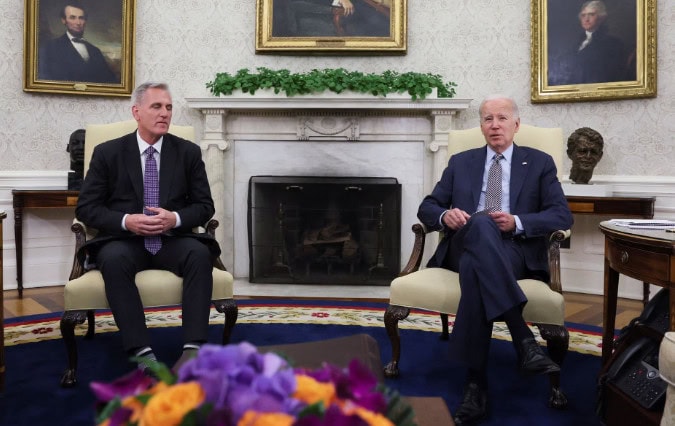With just 10 days left until a potential default that might destroy the U.S. economy, President Joe Biden and House Speaker Kevin McCarthy were unable to come to an agreement on how to raise the $31.4 trillion debt ceiling for the United States government, but they vowed to keep trying.
While McCarthy forces the White House to accept spending cuts in the federal budget that Biden calls “extreme,” and the president pushes new taxes that Republicans have refused, the Democratic president and the top congressional Republican struggled to reach an agreement.
After the discussion on Monday night, each side emphasised the necessity of avoiding default with a bipartisan agreement, and they gave the impression that they would be in contact frequently going forward.
White House negotiators were expected to return to Capitol Hill on Monday night to pick up where they left off.
US to default on debt? Treasury Secretary Yellen calling CEOs personally to warn
In a statement following the discussion, which he called “productive,” Biden said, “We reiterated once again that default is off the table and the only way to move forward is in good faith towards a bipartisan agreement.”
In exchange for raising the debt ceiling, which is required to pay for previously approved spending and tax cuts by lawmakers, Republicans want to reduce discretionary spending, add work requirements to some programmes for low-income Americans, and claw back COVID-19 aid.
Republicans want to return to 2022 levels the next year and limit spending growth in the years to come, while Democrats want to maintain spending at this year’s levels in 2024. A measure approved by the House last month would slash 8% of government spending across the board in 2019.










